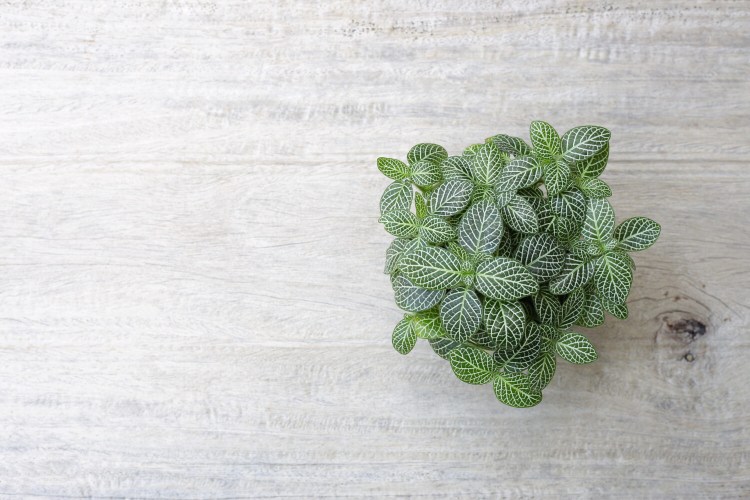This is the time gardeners’ attention turns to houseplants. Everyone should have had a killing frost – or if you haven’t, Swan Island Dahlias advises that by Nov. 15 it is time to pretend you have and dig up your tubers and begin preparing them for winter storage. Outdoor gardening season is over.
Houseplants let Mainers enjoy living greenery and even a few flowers when oaks and maples outside are bare, perennials have died back to the ground and our gardens are often covered by snow.
Last year I wrote about houseplants that are almost impossible to kill. This year, I will go with some that, while they don’t necessarily take extra gardening skill, do require more attention. By this I mean willingness to make the effort rather than a green thumb. With what readers have learned growing the easy plants for the past year, they should be able to tackle these with no problem.
I am beginning with the African violet, which the late, great James Crockett in “Crockett’s Indoor Garden” of 1978 said “are far and away the most popular houseplants in this country.” They wouldn’t be that popular if they were difficult to grow.
With hybridization, the flowers can be yellow, purple, pink, green or white and can be single, double or semi-double. The plant will have flowers almost all the time if they are healthy, but they will go through cycles of heavy and light bloom.
They are a semi-shade plant, so give them an east or west window. Also, it’s best to water them from below because the leaves get splotchy if they are hit with cold water. If you are a thrifty Mainer who turns down your heat at night, the plants could have a problem: they can die if the temperature drops below 55 degrees.

Chamaedorea elegans — the perfect plant to occupy an otherwise empty corner. ilushutter/shutterstock
A parlor palm, Chamaedorea elegans, is the perfect plant for sticking in a corner to fill an otherwise unused space. Though it tolerates low light, it does better with moderate light. It is a slow-growing plant and will reach only three or four feet. It wants moist soil but doesn’t like standing in water, so it does best on a pebble tray. The tray of pebbles is kept full of water, but the pot doesn’t actually touch water.
If that is too diminutive for you, consider the Chinese fan palm. Livistona chinensis can grow to 80 feet tall outdoors but reaches only 10 feet or so indoors. It needs more light than the parlor palm. It also needs even watering and hates sitting in water. If it grows really well (and tall), it may need pruning, but that is easily done.
The Areca palm is another option, growing to eight feet, needing a bit more light and, again, moist but not soggy soil.
Another striking plant as Japanese fatsia, which has large green and white leaves and can reach five feet tall. It can get flowers, but usually does not if it is grown entirely indoors. It prefers cool temperatures and even moistness, with less water recommended during the winter.
Kalanchoe blossfeldiana is often sold as a holiday plant – with people buying them when the red, pink, orange or white flowers are in bloom and throwing them away when the blossoms go by. But if you cut off the spent blossoms, they will often send out new flowers throughout the year. It likes bright light with some direct sun and should be allowed to dry out in between waterings.
Fittonia – also called mosaic plant or nerve plant – is grown for its heavily veined leaves. My wife Nancy has used it as a sort of ground cover underneath taller house plants, and it is attractive with prominent pink, red or white veins brightening the green leaves. It prefers medium light — the leaves will burn if put in direct sun. Fittonia doesn’t like to be soggy but it does like high humidity, so a pebble tray helps.
Calathea or White Peacock plant is grown for its foliage, with white streaks on otherwise dark, green leaves. The stems are pink, which adds even more interest. It grows about 24 inches tall. This plant, too, does best on a pebble tray, which increases humidity without letting the soil get soggy.
Last year I suggested orchids, not because they are easy but because you can buy them in bloom and with a few buds, and enjoy them for several months even if they never bloom again.
The nun orchid is a good option, easier than some because it grows in soil instead of in the air attached to wood, as many other orchids do. Buy the nun orchid in bloom, usually in January or February, and when the blossoms go by, cut it back to the soil. It will resprout, and new flowers will come next year. It needs coarse soil, with some orchid bark, and bright light.
Back to the dahlias. Did you know they can be grown as house plants? Sometime in March, take some of the tubers you have stored all winter (or purchased new) and plant them. Later in the season, you could put some of them outside to get blossoms earlier. The others you could keep in a bright location indoors, creating a houseplant.
I wouldn’t suggest trying all of these. You want a chance to relax during the winter. But pick one or two, just to keep your gardening instincts active.
Tom Atwell has been writing the Maine Gardener column since 2004. He is a freelance writer gardening in Cape Elizabeth and can be contacted at 767-2297 or at: tomatwell@me.com
Comments are not available on this story.
Send questions/comments to the editors.


